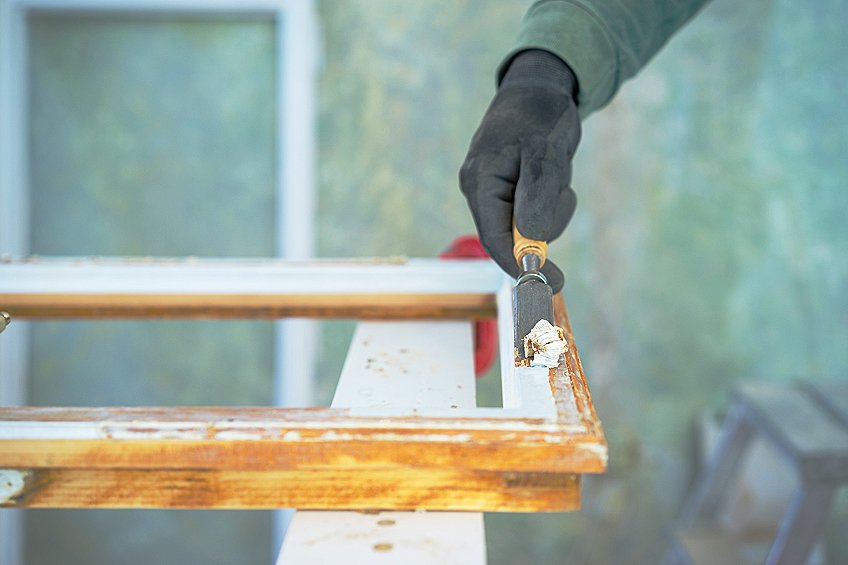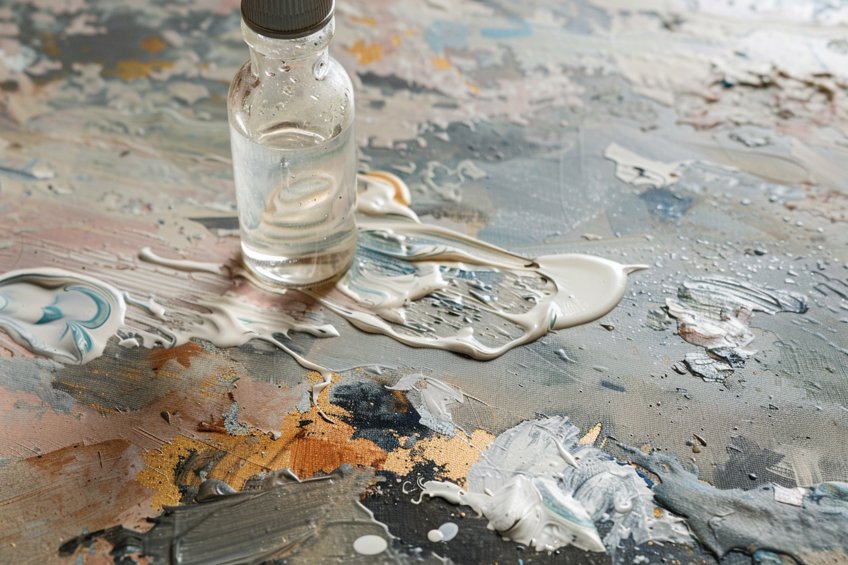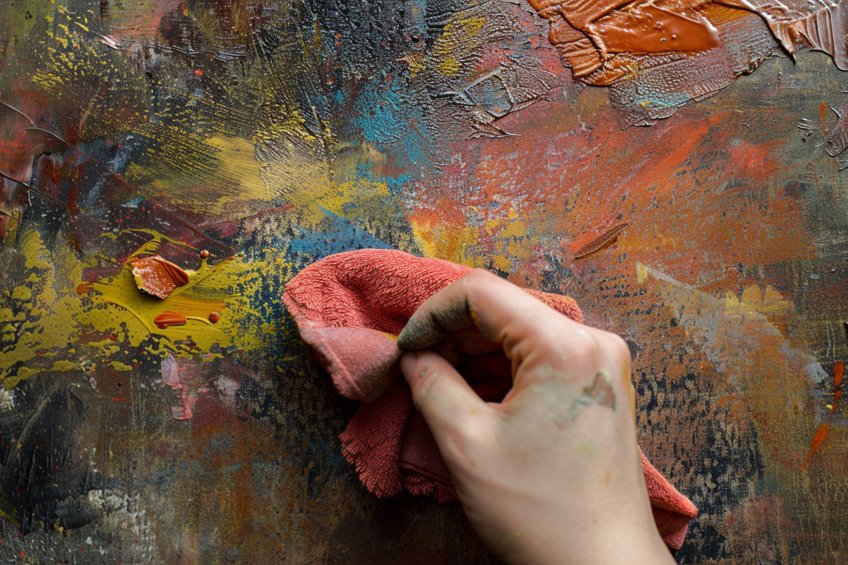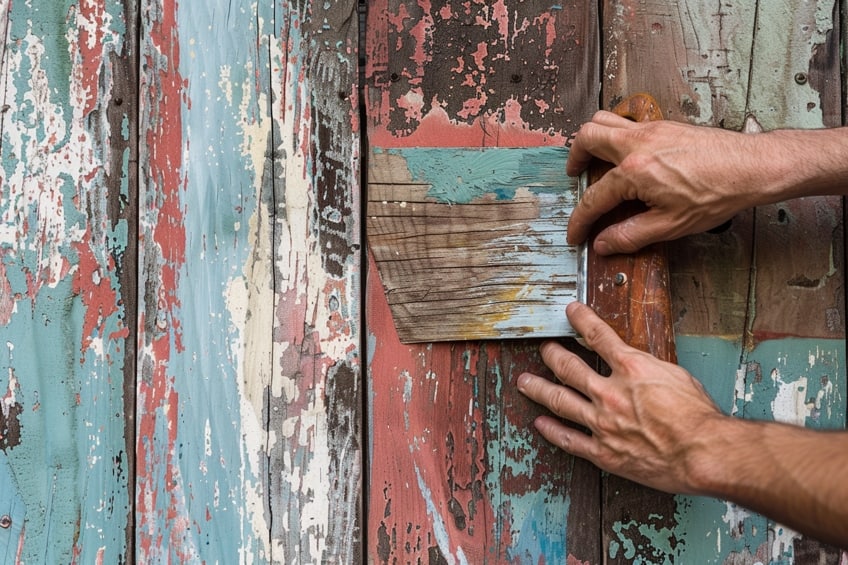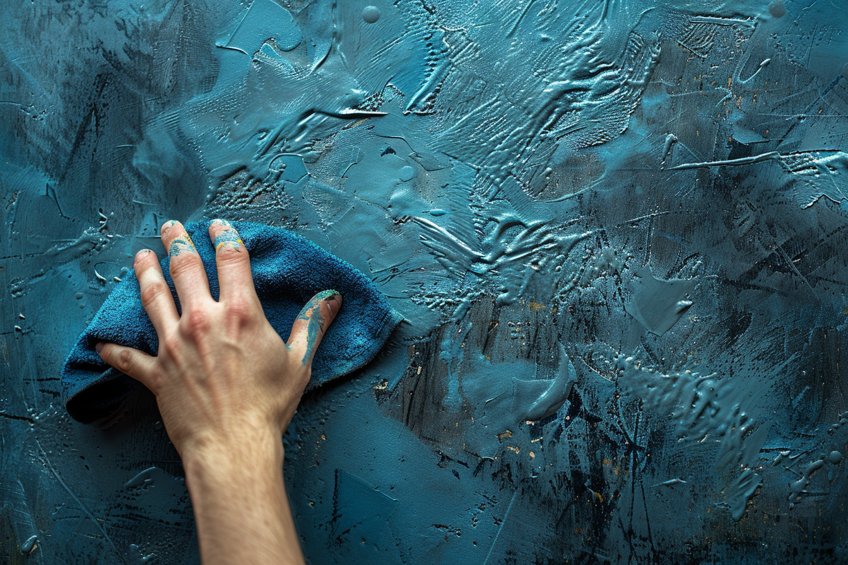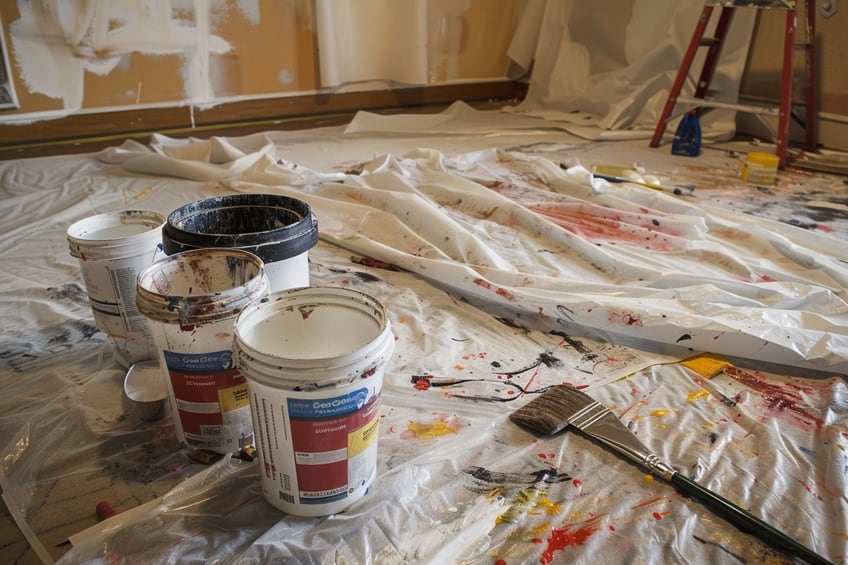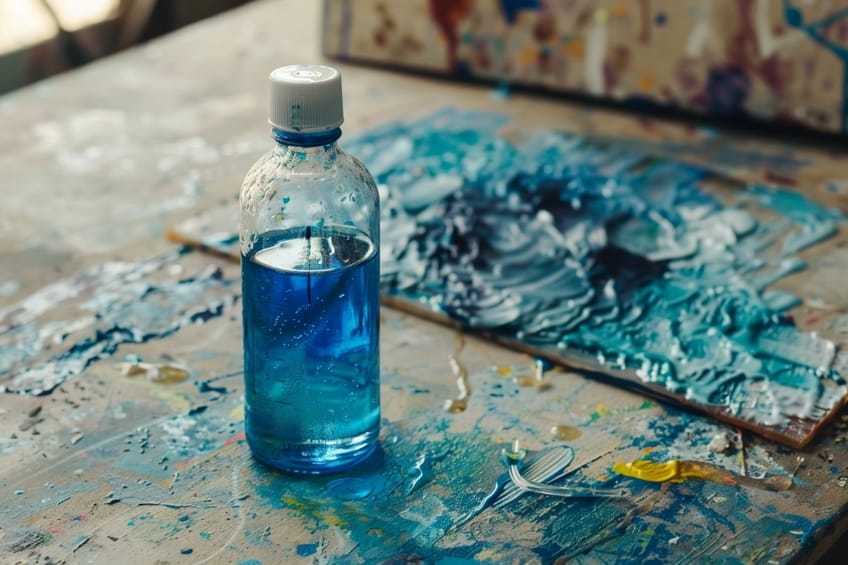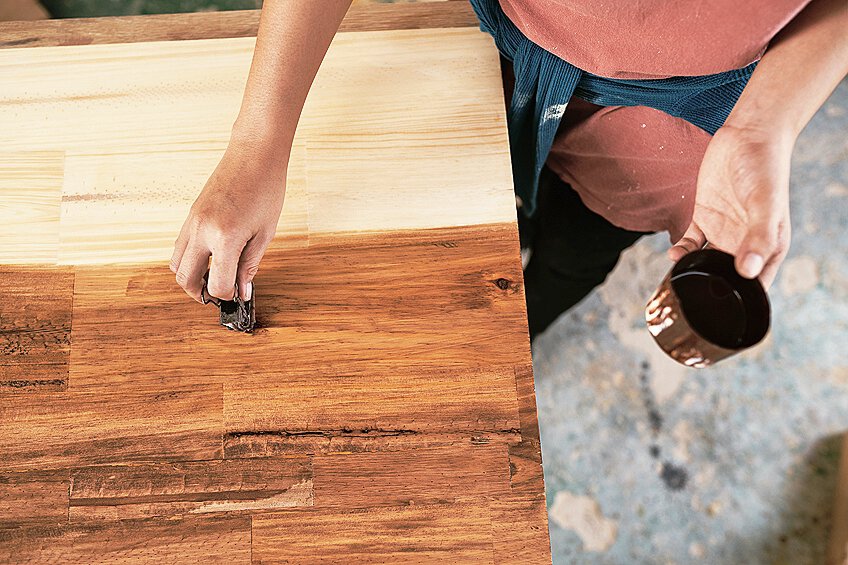Does Rubbing Alcohol Remove Paint? – A Surprising Solution
This post may contain affiliate links. We may earn a small commission from purchases made through them, at no additional cost to you. You help to support resin-expert.com
In the realm of do-it-yourself projects and home maintenance, the question of whether rubbing alcohol can effectively remove paint is a common inquiry. With its versatile properties and widespread availability, rubbing alcohol stands as a potential solution for various household tasks, including paint removal. Whether tackling accidental spills, cleaning brushes, or seeking alternative methods for paint removal, understanding the efficacy of rubbing alcohol in this regard is paramount. In this article, we delve into the science behind rubbing alcohol’s interaction with paint, explore its effectiveness on different surfaces, and offer practical tips for maximizing its potential in your DIY endeavors.
Table of Contents
Key Takeaways
- Rubbing alcohol can act as a solvent to dissolve some types of paint.
- Its effectiveness varies based on the type of paint and surface involved.
- Rubbing alcohol is less aggressive than industrial paint removers, making it suitable for gentle paint removal tasks.
Does Rubbing Alcohol Remove Dried Paint?
Rubbing alcohol, known for its disinfectant properties, also plays a significant role in the world of paint removal. Its effectiveness is attributed to its solvent characteristics, which makes it capable of breaking down and dissolving certain paint types. While it is not as potent as industrial paint strippers, rubbing alcohol can be particularly useful for removing latex, oil-based, and acrylic paints from a variety of surfaces. When it comes to challenging paint removal tasks, the success of rubbing alcohol often depends on the nature of the paint and the surface from which it is being removed.
Fresh paint spills can be more easily tackled with rubbing alcohol; however, it might struggle against paint that has been allowed to dry and cure over time.
For non-porous surfaces or manageable stains, rubbing alcohol can be a convenient alternative to harsher chemicals, offering a gentle yet effective solution. In assessing its effectiveness on different paint types, rubbing alcohol demonstrates varying degrees of efficacy. When it comes to water-based paints, rubbing alcohol proves highly effective, efficiently dissolving and removing such coatings. However, its performance diminishes with oil-based paints, as it may struggle to dissolve the binding agents inherent in this type of paint. While rubbing alcohol remains a viable option for water-based paint removal, alternatives might be necessary for tackling oil-based paints effectively.
It should be noted that while rubbing alcohol can work on several surfaces without causing damage, some surfaces may be sensitive to solvents, and there is a possibility of affecting the underlying material. It is suggested to test the alcohol on a small, inconspicuous area first. Surface consideration is vital when using rubbing alcohol for paint removal. Non-porous surfaces like metal and glass are generally safe, while porous surfaces require caution as rubbing alcohol may cause damage. Assessing the material beforehand ensures effective and safe paint removal.
For effective removal, ensure that the process is conducted in a well-ventilated area and that necessary protective measures, such as wearing gloves, are taken to safeguard skin and prevent inhalation of fumes.
Understanding Rubbing Alcohol and Its Effects on Paint
Rubbing alcohol, specifically isopropyl alcohol, is a substance that both hobbyists and professionals may use to remove paint. Its effectiveness can vary based on the type of paint and the surface it’s adhering to.
Chemical Properties of Rubbing Alcohol
Isopropyl alcohol, commonly referred to as rubbing alcohol, is a solvent with the chemical composition C3H8O. It stands out due to its capacity to dilute and dissolve non-polar substances. This property makes it particularly useful for breaking down the chemical composition of acrylic and other water-based paints.
When discussing concentration, rubbing alcohol is often used in solutions of different strengths, which influences its ability to act on paint.
- Dilute solutions: Generally safe on most surfaces, capable of cleaning without severe effects on the substrate.
- Concentrated forms: May have a stronger action, potentially damaging surfaces especially if they are plastic, wood, or fabrics.
Interaction of Rubbing Alcohol With Paint Types
The interaction between rubbing alcohol and paint depends significantly on the paint’s base.
- Water-based paint: Rubbing alcohol can effectively break down the paint particles in water-based paint, making it easier to remove from surfaces like metal and sometimes plastic without causing damage.
- Oil-based paint: In contrast, rubbing alcohol is less effective on oil-based paint due to its resilient chemical structure, which does not readily dissolve in alcohols. Consequently, oil-based paints, sealants, and some varnishes may resist the effects of rubbing alcohol, particularly if the paint has dried.
Specific surfaces react differently to rubbing alcohol:
- Car paint: If used sparingly and diluted, rubbing alcohol can cleanse car paint without damaging it.
- Wood: Rubbing alcohol is more invasive when used on wood, as it can strip more than just the paint, potentially harming the wood itself.
- Plastic: Care must be taken with plastic, as rubbing alcohol can sometimes make it brittle.
In practice, rubbing alcohol is a powerful tool for certain paint removal tasks but should be used with knowledge of its chemical properties and an understanding of the paint type and surface involved.
Can You Remove Paint From Different Surfaces With Rubbing Alcohol?
Rubbing alcohol can be effective in removing dried water-based paints from various surfaces. However, its efficacy differs based on the type of paint and surface involved.
Potential for Damage on Different Surfaces
- Plastic: Rubbing alcohol can successfully remove paints from plastic surfaces without causing damage, as it dissolves the polymers binding the paint together.
- Painted surfaces: Caution is advised when using rubbing alcohol on painted surfaces. It can dissolve the paint and strip it away, potentially leading to discoloration and damage such as brittleness and cracking over time.
- Acrylic paints: It is especially adept at removing acrylic paints, as these are composed of both low-polar and polar substances, and rubbing alcohol can break these down effectively when paint is wet.
It should be noted that rubbing alcohol is not effective for removing oil-based paints or sealers from any surface. Before using rubbing alcohol for paint removal, it’s recommended to test it on a small, inconspicuous area to check for any adverse reactions.
Practical Guide to Removing Paint With Rubbing Alcohol
Rubbing alcohol can effectively remove dried water-based paint without causing damage to certain surfaces. It acts as a solvent to dissolve the polymer in paint, making it easier to wipe away. For oil-based paints, rubbing alcohol is generally not recommended.
Below is a step-by-step guide to utilizing rubbing alcohol for paint removal.
Preparation and Safety Measures
Before attempting to remove paint with rubbing alcohol, protect the work area with drop cloths or newspapers. Test the alcohol on an inconspicuous area to ensure it doesn’t damage the surface or material. Always wear gloves when handling rubbing alcohol to avoid skin irritation and ensure the room is well-ventilated to prevent inhalation of fumes.
Step 1: Clean the Paint Finish
Begin by cleaning the painted surface with a mixture of warm water and a gentle cleaning agent to remove any dirt, grease, or wax. This step is crucial for surfaces like car detailing or removing paint from wood to prevent scratches and further damage.
Step 2: Apply Rubbing Alcohol
Using 70% isopropyl rubbing alcohol, apply the solvent either by spraying directly onto the paint stain or by saturating a soft sponge. For delicate materials or sensitive surfaces, consider diluting the rubbing alcohol with water to reduce its potency. Allow the solution to sit on the paint for a few minutes to break down the polymers.
Step 3: Wipe the Paint Off
After the paint has softened, gently scrub the area with a sponge, microfiber cloth, or soft-bristled brush, like a toothbrush for intricate areas. For tougher paint stains or layers, a putty knife may be used to carefully scrape off the paint.
Ensure the removal technique is appropriate for the surface, whether it’s vehicle wraps, upholstery, or a porous surface like brick.
Aftercare and Preventing Damage
When utilizing rubbing alcohol to remove paint from surfaces, it’s crucial to follow specific aftercare measures to prevent damage. Below is a guideline to ensure the safety and integrity of the surface after using rubbing alcohol:
- Rinse adequately: After the paint has been removed, thoroughly rinse the area with clean water to remove any residual alcohol, which could potentially continue to affect the surface if left to dry on its own.
- Dry gently: Use a soft, clean cloth to dry the surface. Pat the area gently, avoiding harsh rubbing which might cause abrasion.
- Inspect the surface: Look for any signs of damage such as discoloration or dullness. If damage is observed, a professional may need to assess and repair the surface.
- Protection application: Once the surface is dry and intact, consider applying a protective coating. For automotive paint, this may be a wax or sealant to provide a protective layer over the cleared area.
- Regular maintenance: Regular cleaning and maintenance are advised to keep the surface in good condition and to notice any adverse effects from the alcohol early on.
By adhering to these aftercare steps, one can use rubbing alcohol as an effective paint remover while minimizing the risk of damage to the underlying surface.
Rubbing alcohol can indeed be a valuable tool in the DIY enthusiast’s arsenal for paint removal. Its ability to dissolve and break down various types of paint makes it a versatile and accessible option for tackling unwanted coatings on surfaces. However, it’s essential to exercise caution and perform a test patch before applying rubbing alcohol to larger areas, especially on delicate surfaces or those prone to damage. Additionally, while rubbing alcohol can effectively remove fresh or dried paint, stubborn or multiple layers may require additional techniques or solvents for complete removal. By understanding its capabilities and limitations, enthusiasts can harness the power of rubbing alcohol to achieve professional-looking results in their painting and restoration projects.
Frequently Asked Questions
Is It Safe to Use Rubbing Alcohol to Clean Paint off Plastic Items?
Rubbing alcohol can be an effective solution for removing paint from plastic items. It is gentle enough not to damage the plastic when used properly. However, they should always test a small, inconspicuous area first to ensure that the alcohol does not compromise the integrity of the plastic.
How Effective Is Rubbing Alcohol in Removing Paint from Metallic Objects?
For metallic objects, rubbing alcohol can remove fresh paint effectively. It may not perform as well on paint that has dried and cured, but it can help to soften and lift paint for easier removal. They should use it with care to avoid any potential damage to the metal surface or surrounding materials.


